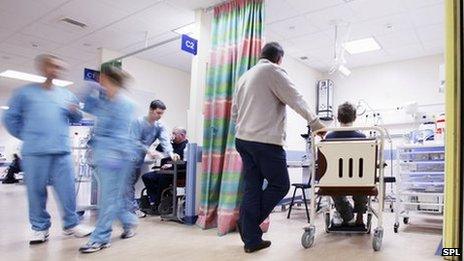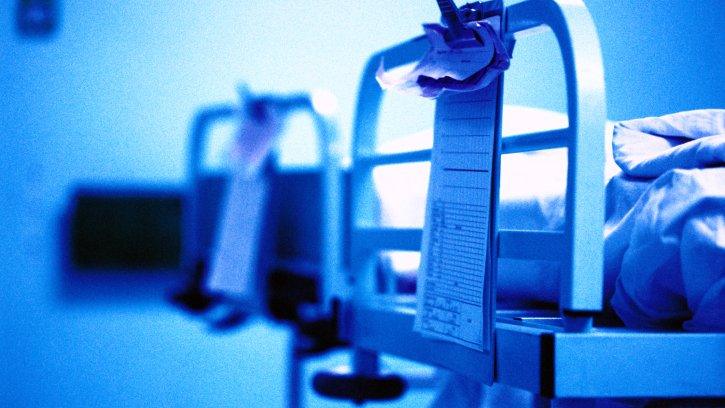NHS pressures 'extreme for third of year', Tories claim
- Published
- comments

Welsh hospitals face being under the highest state of pressure for almost a third of a year on average, according to the Conservatives.
Health boards have four levels of how much pressure emergency services are under and how hospitals should respond.
Thirteen hospitals in six of the seven health boards could not cope with demand for 107 days on average in the last year.
The Welsh Government said pressures were not unique to Wales.
Level four is when emergency admissions are "significantly" above predicted levels and capacity, accident and emergency units are unable to meet further demand, and ambulance patients are awaiting transfer for more than an hour.
It can also be triggered when there is no capacity in the coronary care unit or intensive therapy units, and it is not possible to divert patients to neighbouring health boards.
Health boards must also involve their chief executive or director of planning, tell the Welsh Government of the situation and send home patients who have been admitted but not yet had a routine operation.
The Tories said a letter from Health Secretary Vaughan Gething revealed the figures.
Clwyd West AM Darren Millar AM, who received the letter called the figures "truly alarming" and warned the health service was "operating in a near-permanent state of emergency".
Shadow health secretary Angela Burns said: "Having to operate at such an intensity for protracted periods is neither safe for patients nor fair to staff, many of whom are close to breaking point."
The Welsh NHS has come under intense scrutiny in recent weeks over pressures including an increase in flu, cancelled operations and a row with counterparts in Scotland.

A Welsh Government spokesman said: "We have been open about the challenges that NHS Wales and emergency departments are under, this is not unique to Wales.
"The escalation levels are not designed as a performance measure, they are an internal management tool to aid the management of patients through the hospital system and the levels change throughout a day."
He added: "We are not complacent and are acutely aware the situation could escalate again very quickly, in particular, as a result of the combined effect of flu and cold weather."
- Published11 January 2018

- Published11 January 2018

- Published11 January 2018

- Published10 January 2018
